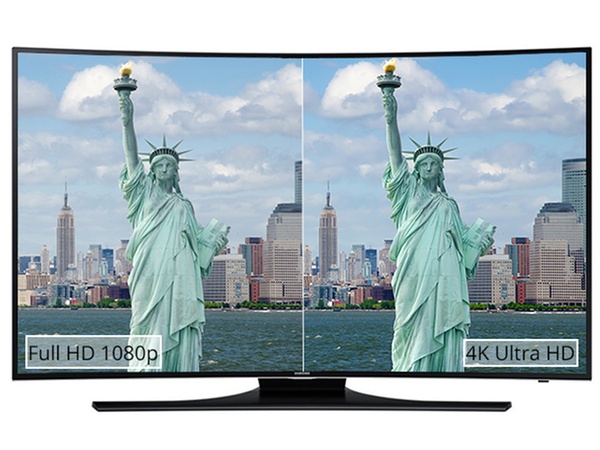
It wasn’t that long ago that TVs were clunky, cube-shaped things with unreliable rabbit ears. The TV-scape, however, has undergone a technological renaissance in the last decade, with flat-panel models opening up a trove of new features related to picture quality.
For a long while, 1080p full HD was considered the cream of the crop when it came to picture resolution. Now, 4K Ultra HD technology hopes to change the game.
But many customers wonder: exactly what is 4K TV and what are the benefits? We break it down.
First, a Note About Pixels
It’s all about the pixels. Pixels are what make up onscreen images, and the more you can pack into the display, the more vivid and lifelike your picture will be.
What We Mean By 4K Ultra HD
Standard 4K Ultra HD displays have a resolution of 3,840 by 2,160. This means there’s 3,840 pixels along the horizontal part of the display, then an additional 2,160 vertically.

How Does That Compare to 1080p Full HD?
4K Ultra HD TVs essentially quadruple the amount of pixels found in 1080p full-HD TVs, which have a standard resolution of 1,920 by 1,080. Four times the pixels means four times the picture quality.
Is There a Notable Difference?
Yes, especially on TVs that are 50” and larger. Colors and textures appear as they do in nature, and heretofore unseen details emerge from your favorite movies, TV shows, and sporting events.
Does Everything Stream in 4K on a 4K TV?
Not exactly. To reap the benefits of 4K, you’ll need to watch content that’s been sent to your TV in 4K quality. You can, however, upconvert traditional HD content to near-4K resolution. It won’t be as vivid as native 4K content, but it will exceed the limits of 1080p full HD.
Where Can You Find 4K Content?
Netflix is a leading provider of 4K content, with series such as Daredevil and Breaking Bad streaming in Ultra HD. Following in Netflix’s footsteps are UltraFlix and YouTube, both of whom are expanding their library of 4K UHD content. Commercial television and movies are rarer, but with more Hollywood films being filmed in 4K, it’s only a matter of time before you’ll be able to enjoy the majority of entertainment in 4K.

Will You Need New Cables?
Not if you already own an HDMI cable. Standard category 2 HDMI cables work just fine with a 4K TV, but buying an advanced HDMI 2.0 cable will get you a higher refresh rate.
